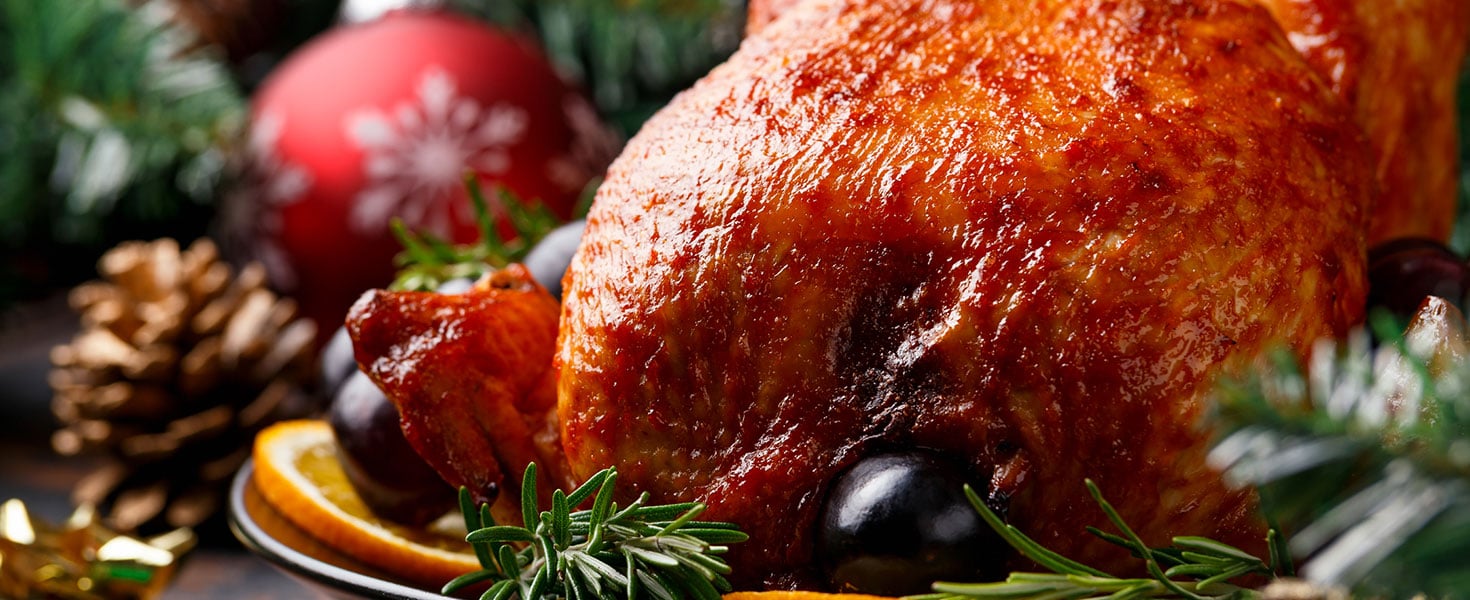

As the winter holiday season approaches, households around the world are preparing to mark religious or cultural observations. While routines and calendar dates vary, these at-home occasions involve family, food, and festivities.

In Great Britain, a Christmas Day dinner is complemented often by turkey, Brussel sprouts, mince pies, and Christmas puddings. A friendly tug of war happens with crackers, in which the pulling of these decorated paper tubes releases a light-sounding bang and a prize.
Like other Spanish-influenced cultures, people in Puerto Rico partake in Nochebuena, a Christmas Eve feast. Servings include arroz con gandules and pernil asado plus coquito, a coconut-based eggnog, and tembleque, a coconut pudding garnished with cinnamon.
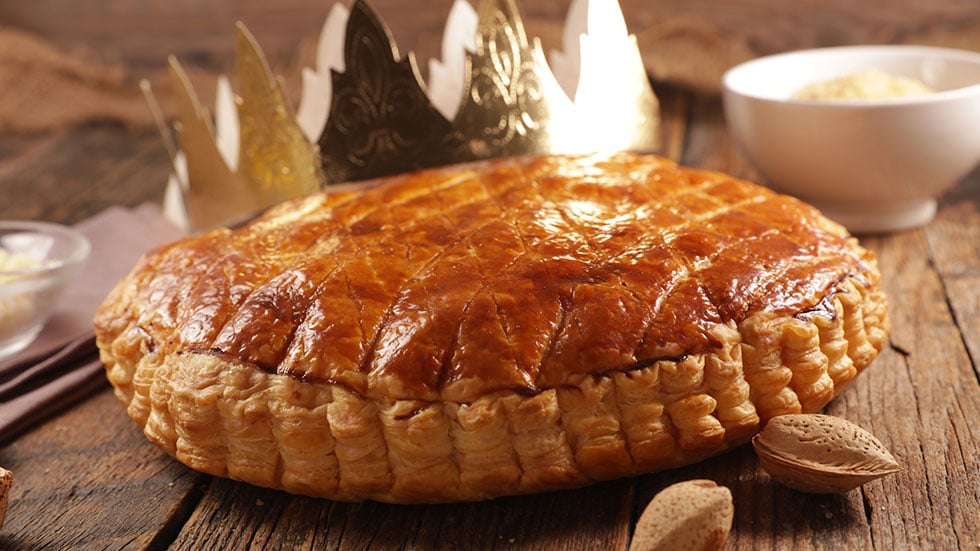 Epiphany cake. Photo by Margouillatphotos/iStock
Epiphany cake. Photo by Margouillatphotos/iStock
In Latin and European countries, January 6 marks Three Kings Day, or the Epiphany with many customs. Puerto Rican children place hay in shoeboxes under their beds for the Magi’s animals in exchange for gifts.
In the Philippines, Filipinos hold their Nochebuena after Misa de Gallo, the final mass in a nine-day series of church services known as Simbang Gabi. Dishes include ham, edam cheese, lumpia, and fruit salad. Some also practice pagmamano, a tradition involving family visits for younger members to pay their respects to older relatives.
From December 26 to January 1, Kwanzaa celebrates African-American heritage and culture through seven principles; each day is dedicated to one of them. Homes are adorned with fruits, a woven mat called a mkeka and a Kinara—a candle holder with one black, three red, and three green candles. On the sixth day of Kwanzaa, a feast called Karamu encompasses foods culturally connected to the African diaspora.
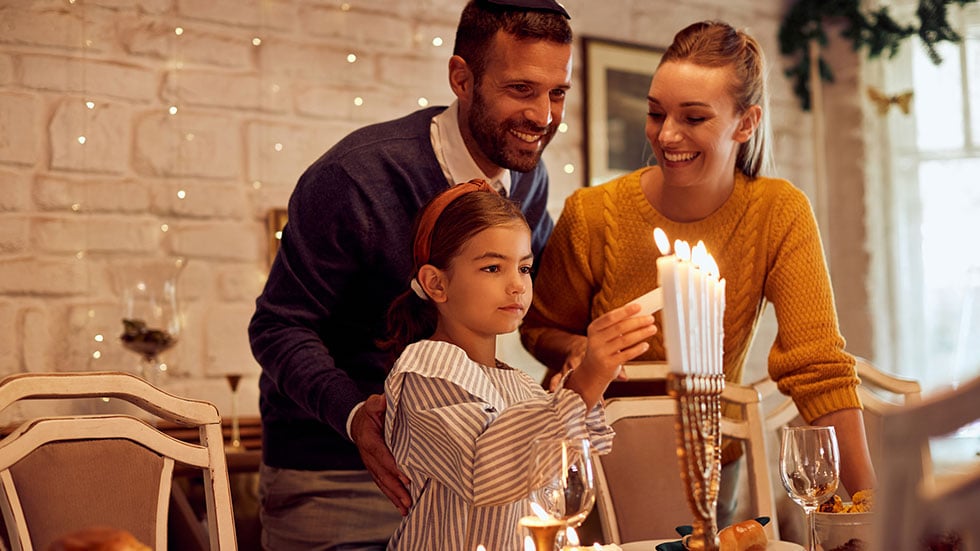 Happy family lightning candles in menorah. Photo by Drazen Zigic/iStock.com
Happy family lightning candles in menorah. Photo by Drazen Zigic/iStock.com
During Hanukkah, families light a menorah, play with dreidels, and enjoy foods fried in oil such as latkes. In Israel, the sufganiyah is a doughnut covered in powdered sugar and often filled with jelly, chocolate, or a sweet preserve.
France, Belgium, Switzerland, and the Canadian province of Quebec enjoy Bûche de Noël, a chocolate Yule log cake. Grenada households prepare black cake, salted ham, sorrel, and cocoa tea.
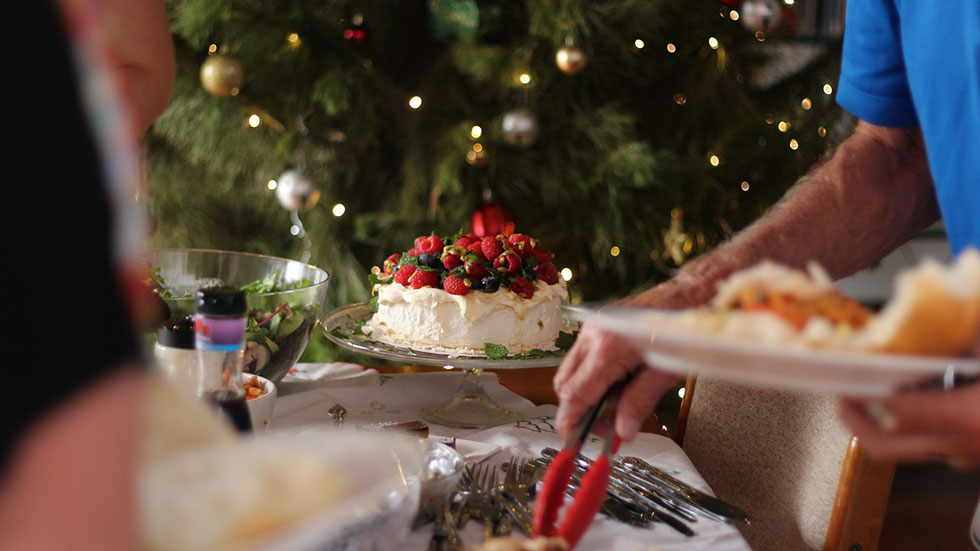 Christmas lunch buffet table and a pavlova. Photo by Nedjelly/iStock.com
Christmas lunch buffet table and a pavlova. Photo by Nedjelly/iStock.com
Risalamande is a Danish rice pudding with chopped almonds and a cherry sauce topping. Its bowl hides a whole almond—the finder wins a present. Norway’s Seven Sorts refers to a collection of Norwegian Christmas cookies such as the gingerbread, Pepperkaker.
About 14 days before Christmas, the Lebanese honor the feast day of Saint Barbara by planting seeds— from chickpeas to lentils—in soaked cotton wool and watering them daily until Christmas to decorate Nativity scenes.
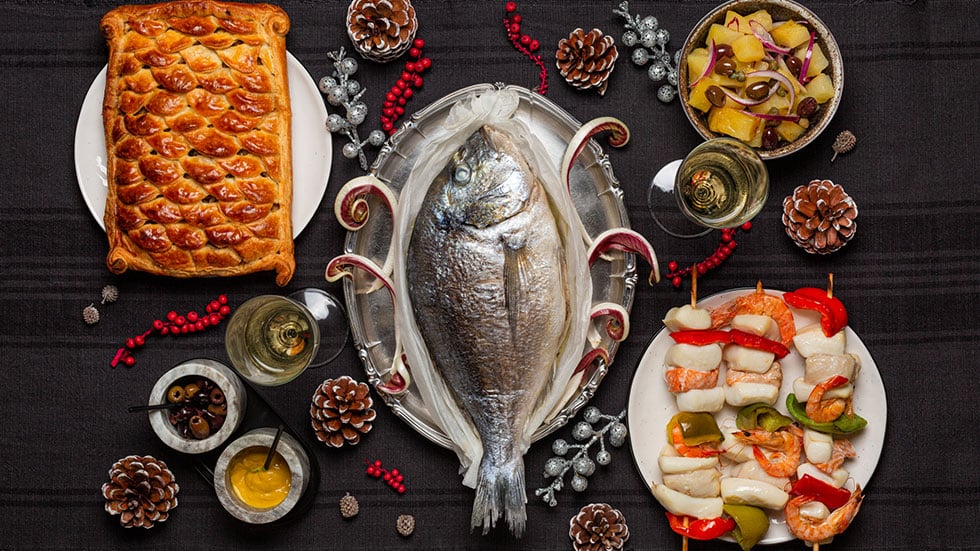 Christmas eve fish dinner. Photo by Olga Mazyarkina/iStock.com
Christmas eve fish dinner. Photo by Olga Mazyarkina/iStock.com
On Christmas Eve in Italy, fish dishes are commonly prepared and vary by region. Rome’s specialty, pezzetti, is fried cuts of artichoke, zucchini, and broccoli mixed together. Italians also play tombola, a game similar to bingo.
The Czech Republic is superstitious in their Christmas celebrations. One involves the floating of a candle holding a walnut shell along a bowl of water. If the shell makes it, its owner gets a good life—if not, oh well.
Originating in Mexico, luminarias are a New Mexico tradition. Votive candles in brown paper bags reflect the light from the Star of Bethlehem—they’re also called farolitos.
New Year’s Eve rings in customs linked to the Gregorian calendar and prosperity. Spain’s 12 grapes tradition has eaters chowing down on them at the stroke of midnight for luck.
Asian communities recognize the Lunar New Year and its ushering in springtime. For Chinese New Year, families will thoroughly clean their homes to get rid of bad luck and gather to eat foods that symbolize longevity and prosperity. Koreans begin their celebration with the holiday of Seollal, which also has them gathering with loved ones and paying respect for their ancestors.
